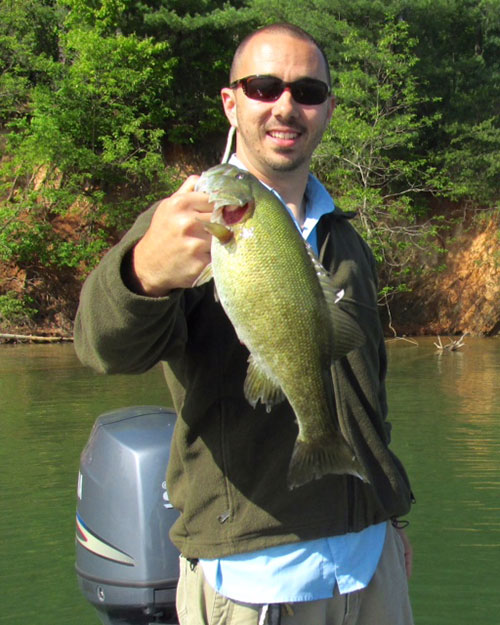While fishing local tournaments, fun fishing, or just fishing in general, over the past four decades, I’ve noticed very few anglers with a fly rod in their hands, nor in their boats at the ramp. The usual hard baits and soft plastics do catch many fish, but bass are bombarded by these offerings and can become conditioned to some of them.
Consider the deer hair bass bug. It is softer than hard bodied bugs-extending your hookset time. Deer hair bugs present a less intrusive-more quiet offering with a different silhouette with a subtle action that, many times, entice a strike, especially when bass are in a neutral feeding mode. They instinctively strike a dying food source, fortunately for us. Just as in pre-spawn, when strikes come during the pause while using a jerkbait. They cannot resist!
This time of year, bluegill become a prime target for bass. With bluegill spawning several time a year, look for beds in backs of coves and-or-around some cover, with trees and weeds being the best. These beds are usually easy to see in Lake James’ usually clear water, especially on windless days. Beds can also be located in river channel main lake cuts. One of the most exciting sights in fishing, if the light is right and you have a good angle, is witnessing a bass shooting out from underneath a tree to take a bug.
Points are always hot spots along with rip-rap. The deeper the rocks extend into the depths, the better. Even in pre-spawn, we have taken smallmouth, largemouth, and the occasional white bass in staging areas. Good overall patterns include mostly white, with a red head, solid yellow, tank-brown-black, solid black and all chartreuse. Some chartreuse, either in the tail or collar is also good. A touch of red also helps. All these patterns are very good with a collar, similar to the Dahlberg diver.
Try to match the bug to natural food sources, while understanding the food chain in the water, and you can mimic anything with a deer hair bug that struggle in the surface film trying to regain flight, or escape to cover or shore.
To match bluegill, use a mixture of olive, blue, tan, and orange. Solid colors are okay, but a combination of two or more colors is better. Again, occasionally add some chartreuse to the pattern. Lighter shades of these colors should be used to mimic juvenile bluegill. These smaller bugs are easier to cast since they offer less wind resistance. Tie, or buy them on #2-#4 hooks larger imitations should include #2/0, #1/0, and #1 in 2X or 3X long hooks.
In addition to different colors of deer hair, I utilize hen neck feathers, saddle hackles, ostrich, marabou, rabbit strips, and rubber or the tails and legs with pearl crystal flash and rainbow flashabou accent. Stick-on eyes add an extra appeal. Play it safe and use waterproof epoxy when applying eyes. Deer hair bass bugs represent an easy meal to fish. During the retrieve, which is usually a twitch and wait game, bugs simulate a dying-drowning food source. You can mimic almost anything with one, especially a wounded bluegill. Many times a dead-sticking retrieve is very effective. If it is not, try a jerky, erratic retrieve to mimic a bluegill’s darting movements.
Though much more fun, topwater isn’t the only method of catching bass with a fly rod. Subsurface imitations such as minnows and threadfin shad are also effective. Tie or buy these slender silhouettes in size #2 through #10. The best ones have estaz opalescent white and pearl, chartreuse krystal flash chenille, or regular chenille in the dressings along with the aforementioned krystal flash and flashabout.
It’s best to use a long 10 ft. clear or low-visibility green leader with a 6 lb. or 8 lb. tippet since some of these educated bass can be leader shy. It’s more exciting too, since you can’t exactly “horse” these fish to the boat. I tie my own leaders, with Spiderwire mono, because I believe the knots help the bug turn over easier. A tapered leader is also fine, just remember to add more power to your forward cast while pushing your forearm forward, before you bend your elbow.
So, consider the fly rod with bugs on your next fishing adventure. You just might have more hookups than with other lures. Plus, at Lake James, depending on where you are located on the lake, you can be hanging on to a sizable bass with a view of Shortoff Mountain in the background.
At The Rod & Fly, we carry a wide variety of patterns in our store. If we don’t have it, we can tie it!
Paul Shell is the Owner/Operator of The Rod & Fly located in Morganton, NC. Visit his store or give him a call at (828) 433-9747.
